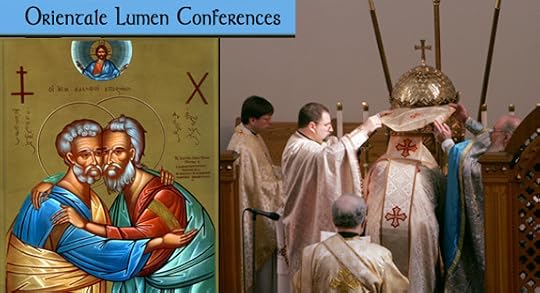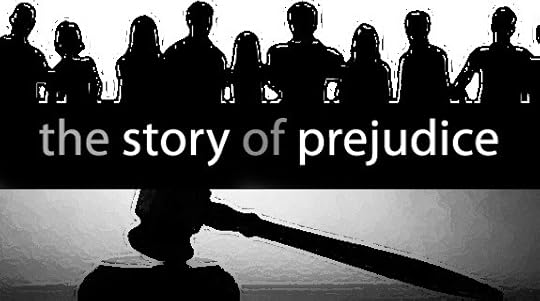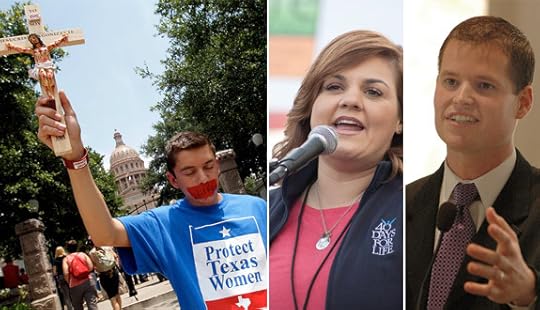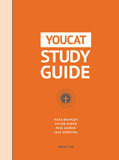Carl E. Olson's Blog, page 142
July 19, 2013
Consensus and Inconvenient Evidence

Consensus and Inconvenient Evidence |
Thomas M. Doran | CWR blog
If we are such reasonable people,
why are we becoming a nation of unreasoning and evidence-disdaining
cattle?
Our culture likes to flatter itself on
its broadminded, rational, even scientific approach to the issues of
our times. Many are proud to have put the “voodoo of religious
faith”, and everything that can’t be measured, behind them.
Matt Ridley, who recently “retired”
from authoring the Wall Street Journal’s Mind & Matter
(science) column, speaking about climate change, says, “…science
does not respect consensus. There was once widespread agreement about
phlogiston (a nonexistent element said to be a crucial part of
combustion), eugenics, the impossibility of continental drift, the
idea that genes were made of protein (not DNA) and stomach ulcers
were caused by stress, and so forth – all of which proved false.
Science, Richard Feynman once said, ‘is the belief in the ignorance
of experts’…So, yes, it is the evidence that persuades me whether
a theory is right or wrong, and no, I could not care less what the
‘consensus’ says.”
Ridley’s perspective can be applied
to many subjects and issues, small and big. For instance, the
consensus is that professional athletes need sports
psychologists, so – using golf as an example – why is there a
dearth of modern professionals with the tough-mindedness of a Sam
Snead, Ben Hogan, Arnold Palmer, Jack Nicklaus, or Tom Watson, men
who excelled at the game before sports psychology was in vogue?
The consensus is that modern visual art
(portraying a materialistic worldview) has displaced the
anachronistic and chauvinistic art of previous centuries, so why
would an exemplar of modern art, Salvador Dali, suggest that as
modern artists had come to believe in nothing, their art amounted to
nothing?
The consensus is that the natural
environment in the U.S. is deteriorating, though the great majority
of the evidence – declines in water/air-related illnesses,
significant water/air quality improvements, habitat creation,
sensitive species returning to once-polluted rivers, advancements in
treatment/recycle technologies, indicates that America’s natural
environment has been improving for decades, so why are so many people
convinced that America is experiencing an environmental crisis?
The consensus is that racial, ethnic,
gender, and sexual orientation “diversity” enriches academia and
workplaces, but where is the evidence that ethnic and sexual
diversity produces diversity in thinking, attitude, or perspective?
Why are there so many universities, populated with a “diverse”
faculty and student body, that can’t abide non-conforming thinking?
July 17, 2013
Grassroots Ecumenism of Friendship Keeps Orthodox-Catholic Hopes Alive

Grassroots
Ecumenism of Friendship Keeps Orthodox-Catholic Hopes Alive | John Burger | CWR
Orientale
Lumen Conferences Boost Participants’ Knowledge of Issues, Forge
Ties
“The
light of the East has illumined the universal Church, from the moment
when ‘a rising sun’ appeared above us: Jesus Christ, our Lord,
whom all Christians invoke as the Redeemer of man and the hope of the
world.”
Thus
began Pope John Paul II’s 1995 apostolic letter Orientale
Lumen (“Light of the
East), which encourages Latin Catholics to better know the traditions
of the Christian East.
Rather
than collecting dust on a Vatican shelf, the letter has continued to
inspire a Washington, D.C.-based grassroots ecumenical movement for
almost two decades. Initially planned as a single meeting to discuss
John Paul’s work, the Orientale
Lumen Conference has become an annual gathering open to anyone.
In some ways, it has kept the light of Orthodox-Catholic dialogue
burning while official dialogues have hit roadblocks.
And
for that it has received acclaim from leaders in both the Orthodox
and Catholic Churches.
“Although
you say your movement is grassroots, I’m convinced it’s rooted in
heaven and inspired by the Holy Spirit,” the Ecumenical Patriarch,
Bartholomew, Archbishop of Constantinople, told the apostolate on its
10th
anniversary.
“It’s
exactly the kind of thing the ecumenical movement needs,” said
Paulist Father Ronald G. Roberson,
a top ecumenical officer of the United States Conference of Catholic
Bishops. “People go home from these conferences and talk to their
friends,” said Father Roberson, who is associate director of the
U.S. bishops’ Secretariat for Ecumenical and Interreligious
Affairs. “The hope is they go back and talk to people and it has a
ripple effect. It’s an excellent project. My initial pessimism was
not wall-founded.”
That
would have been in 1996, when Jack Figel, a Byzantine Catholic from
Fairfax, Va., and Metropolitan Kallistos Ware, who teaches at Oxford,
were planning the initial event.
Figel,
who grew up in a Slovak family near Pittsburgh, rediscovered his
Eastern Christian roots when he was in college. In the early 1990s,
he met a priest in England who wanted to revive publications of the
ecumenical Society of St.
John Chrysostom. The result was Eastern
Churches Journal. Later,
when the priest, Father Serge Kelleher, and an Orthodox bishop,
Vsevolod of Scopelos, wanted to reprint a liturgical book from 17th
century Kiev, Figel started Eastern
Christian Publications, which he still runs. ECP’s list
includes books, DVDs and CDs on ecumenism and Eastern Christianity.
Figel
met Orthodox Bishop Kallistos Ware, a theologian and a metropolitan
in the Ecumenical Patriarchate, in 1996.
“Over
dinner, I proposed the idea of holding an open-to-the-public
ecumenical meeting about Orientale
Lumen,” Figel recalled during
a recent interview in Washington. “Bishop Kallistos immediately
agreed and even got his diary out and we planned the conference for
June of 1997. I knew the dean here at Catholic University, Father
Raymond Collins. I went to him with the idea; he thought it was
great. He said he would cosponsor it as the dean of theology and
religious studies.”
July 15, 2013
New from Ignatius Press: "YOUCAT Study Guide"
Now available:
by Jack Kersting, Mark Brumley, Paul George, and Vivian Dudro
Related Products:
YOUCAT - Paperback
YOUCAT - Electronic Book Download
YOUCAT: Youth Prayer Book - Paperback
The tremendously popular, global Catholic youth phenomenon YOUCAT-Youth
Catechism of the Catholic Church-now has an easy-to-use companion study
guide. Aimed at helping readers to get the most out of YOUCAT, the
YOUCAT Study Guide features 35 topics based on the catechism. Each
topic has a brief introduction (Behind YOUCAT); short questions on
YOUCAT's coverage of the topic (What does YOUCAT say?); a section on
Scripture (What Does the Bible Say?); discussion questions based on
YOUCAT (YOU Chat); a brief reflection on the YOUCAT material covered
(YOU Reflect); and a set of ideas for action (YOUCAT Challenge). Each
topic relates the material of YOUCAT in one of the four pillars of the
catechism-the Creed, the Sacraments, Morality, and Prayer. And each
topic includes space for readers to "journal" their thoughts while
reading through YOUCAT.
The YOUCAT Study Guide is excellent for classroom use, youth group
discussions, or personal study. The Study Guide is designed in such a
way that the sections of the topics are module-they can all be used or
leaders can select sections to use as time or interest permits. Written
by people experienced with youth ministry and education, YOUCAT Study
Guide helps young people go even deeper into their faith using YOUCAT!
Special bulk discount pricing:
100+ copies - 25% discount off the retail price
200+ copies - 35% discount off the retail price
1500+ copies - 40% discount off the retail price
Please email webhelp@ignatius.com for bulk orders
Some further thoughts on "Lumen Fidei"
After writing an editorial, "Throwing Down the Gauntlet of Faith" (July 8th), about the encyclical, Lumen Fidei, I wrote a longer and more thorough piece, "Unity and the Light of Faith" for Catholic Pulse. Here is some of the opening:
In a unique way, Lumen Fidei brings to completion the papal project, if you will, begun with Pope Benedict’s 2005 encyclical Deus Caritas Est
(“God is Love”): a detailed and vigorous set of encyclicals focused on
the three theological virtues. That this new encyclical is presented and
authored by Pope Francis only reinforces the constant and important
emphasis within this newest encyclical on unity: unity of
faith, unity in truth, unity in the Church, journeying in unity, the
unity of the divine plan, and the unity of the Godhead. The cooperation
of Pope Francis and Pope Emeritus Benedict is, I think, a sort of quiet
rebuke to those who would fret over and fixate upon the differences
between the two men to the point of agitation. Comparisons are normal;
they can even be helpful. But the very production of this text — which
is bold, humble, direct, nuanced, intellectually demanding, and
spiritually challenging — is a reminder of what the papacy is and what
it is meant to do. “The Successor of Peter,” writes Pope Francis (having
acknowledged that he had merely “added a few contributions” of his own
to Benedict’s draft), “yesterday, today and tomorrow, is always called
to strengthen his brothers and sisters in the priceless treasure of that
faith which God has given as a light for humanity’s path” (#7).
Rather than be concerned or bothered by how obviously different Popes
Benedict and Francis are in many respects, we should rejoice in how
faith in the One God, who is a perfect communion of three Persons, so
beautifully unites the people of God and calls all men into the saving
union and communion of the Church. While the world speaks endlessly of a
“diversity” that is often dull, coerced, and thoroughly homogenized,
the Church demonstrates a unity that is possible precisely because it
flows from God, is rooted in truth, is revealed in love, and is
expressed in joy: “This is also the great joy of faith: a unity of
vision in one body and one spirit. Saint Leo the Great could say: ‘If
faith is not one, then it is not faith’.” (#47).
In my previous Catholic Pulse essay, “Love, Hope, and Truth: Benedict XVI’s Three Encyclicals,” I sought to show how Deus Caritas Est (on Christian love), Spe Salvi (on Christian hope), and Caritas in Veritate
(on integral human development) together provide “a cohesive,
integrated understanding of the person of Jesus Christ (Christology),
the nature and mission of the Church (ecclesiology), and salvation and
the last things (soteriology and eschatology).” It seems fitting to
consider the same “-ologies” within Lumen Fidei, keeping in mind that there is no substitute for reading and prayerfully contemplating the entire encyclical!
Read the entire essay on the Catholic Pulse site.
The Story of Prejudice

The Story of Prejudice | Michael Coren | CWR
For all of the real failures of individual Catholics, the Church itself has always been color-blind
I
must have been eight or nine-years-old at the time. I had been
playing soccer in the local park with some boys my age, and as well
as my friends there were some children we’d not seen before. In
that pitch-perfect music of innocent childhood we didn’t care or
judge, but just played and had fun.
At
the end of the day, one of my new friends asked me if I wanted to
come back to his home for a drink and cookies or something like that.
Off we went. We laughed, chatted, played. Delightful. Then the boy’s
dad came home and started to ask questions that I didn’t fully
understand. He then became loud and angry, and my friend was suddenly
sad and frightened. “I’m sorry, but you’re going to have to
leave” he said. None of it meant anything to me, and I simply left.
Memory
is a funny thing. It was only years later that I realized what had
actually gone on that day, and I’m still not sure why I submerged
it all. The father had shouted, “Is he a Jew; is he a Jew?” The
boy had not known what a Jew was, but his dad certainly did. The
father had gotten progressively more angry, and then I had to leave.
Actually I have three Jewish grandparents and my mother’s mother
wasn’t Jewish, so I’m not quite the real thing. Perhaps I should
have asked the old Nazi if I could have stayed for a quarter of the
arranged time!
I
mention this because of the recent Zimmerman trial and verdict. I
suppose that few, if any, white people can fully comprehend and
appreciate the nature and pain of racism, and I won't claim for a
heartbeat that I can in any way empathize with the black experience.
July 13, 2013
The Heart and the Good Samaritan
Ordinary Time | Carl E. Olson
Readings:
• Deut 30:10-14
• Ps 69:14, 17, 30-31, 33-34, 36, 37
• Col 1:15-20
• Lk 10:25-37
“The heart,” wrote St. John
Chrysostom, “is the most noble of all the members of our body.”
The twentieth-century philosopher Dietrich von Hildebrand observed
that in Scripture the heart is often contrasted, not with the will or
intellect, but with the body. The heart is “chosen as a
representative of man’s inner life” and identified closely with
the soul.
There are some seven hundred references
to the heart in the Bible; the first two are found in Genesis 6,
where it states that the wicked “desires” or “thoughts” of
man’s heart had grieved the heart of God (Gen. 6:5-6). Few of the
numerous references to the heart have to do with the physical,
blood-pumping organ, or even with emotions (that would actually be
kidneys and bowels!). The heart, in Scripture, is the center and core
of a human being; it is a complex and mysterious combination of
personality, intellect, character, and will. Whereas in modern
culture “the heart” is often related to strong feelings (often
romantic in nature), the biblical perspective is far more concerned
with moral character, especially with holiness and fidelity.
This is significant for appreciating
today’s readings from Deuteronomy and the Gospel of Luke.
Deuteronomy (which means “second law-giving”) contains a detailed
presentation of the Law given to Israelites, culminating in a series
of blessings and curses (ch. 28-30) that God promised would “come
upon” the people depending on how well they observed the Law. Not
surprisingly, the curses far outweigh the blessing, and today’s
reading seems to accept that failure will follow, stating, “when
you return to the Lord, your God, with all your heart and all your
soul.” This is a reiteration of Deuteronomy 6:5, which is part of
the Shema Yisrael (Dt. 6:4-9), the greatest prayer of Judaism.
God’s commands, Moses relates to the people, are not
mysterious or impossible to follow, but are very near, “already in
your mouths and in your hearts.” While the heart is the center of a
man’s being, the mouth is the gateway or window to a man’s heart
and soul. This important concept was used by St. Paul when he told
the Romans of the necessity of confessing that Jesus is Lord and
believing in “your heart that God raised him from the dead” in
order to be saved (Rom. 10:9-10). Far from being an emotional or rash
response, this is public action rooted in profound consideration and
commitment of the will.
The question asked of Jesus by the
scholar of the law was hostile, meant to test him and expose any
weaknesses in his stance regarding salvation. As he often did, Jesus
answered the question with questions of his own, as if to say, “You
are the recognized scholar; you tell me the answer!” The lawyer
quoted directly from the Shema and Leviticus 19:18,
demonstrating that he had intellectually mastered the answer. But had
his heart absorbed the truth and been transformed by what was in his
head? Could he, like the Psalmist, say, “The precepts of the Lord
are right, rejoicing the heart” (Psa. 19:8)? And while the words of
his mouth met with favor, what about the thoughts of his heart (see
Psa. 19:15)?
The scholar sought to justify himself by
bringing up a much-debated question: who really is my neighbor? Some
Jews said it included strangers and sojourners (cf. Lev. 19:33-34);
others insisted that only members of the Jewish community should be
called “neighbors”. Some, such as the priest and the Levite in
the parable of the Good Samaritan, were heartless because they had
long forgotten that the Law was actually about loving God and loving
others.
When religious practice no longer has a
transcendent center—that is, a heart seeking after God—it becomes
fearful, selfish, and merciless. Soulless works cannot save us; they
actually separate us from the blessings of the divine life. Love God
with all your heart. Love your neighbor as yourself. Do this and you
will truly live.
(This "Opening the Word" column originally appeared in the July 11, 2010, edition of Our Sunday Visitor newspaper.)
No More Gosnells: An Interview with Abby Johnson and Shawn Carney

No
More Gosnells | Carrie Gress | Catholic World Report
Abby
Johnson and Shawn Carney talk about the new Texas law, “The Preborn
Pain Act”
Bryan,
Texas – Wendy Davis and her supporters have either bought into
a lie about abortion or mistakenly believe these clinics are safe
places, but we have the truth, says former abortion clinic worker
Abby Johnson.
Shawn
Carney and Abby Johnson once stood toe to toe on opposite sides of
the fence at the Planned Parenthood in Bryan, Texas, until Abby
joined the pro-life cause. They talked to CWR about the new abortion
law in Texas and what it means for the clinic where they met and for
the other abortion clinics in the Lone Star State.
House
Bill 2364, “The Preborn Pain Act”, passed in the state senate
late Friday night and is expected to be signed by Governor Rick Perry
in the coming days.
Shawn Carney is one of the
founders of 40 Days for Life and
co-author of 40
Days for Life: Discover
What God Has Done...Imagine What He Can Do.
Abby
Johnson is a former abortion clinic worker named "employee of
the year" by Planned Parenthood and now the author
of Unplanned:
The
Dramatic True Story of a Former Planned Parenthood Leader's
Eye-Opening Journey Across the Life Line,
and founder
of "And Then There Were None,"
a support group for abortion clinic workers who have left the
industry.
CWR:
What are the changes this law will make for abortions and
abortion clinics in Texas?
Carney:
The proposed laws would ban late-term abortions after 20 weeks in
Texas. The biggest impact of this law will be how it raises the
standards of the abortion industry, against their own will. For
instance the abortionist will need to have admitting privileges to a
hospital within 30 miles of the facility and new upgrades would be
required inside the facility. This has caused a huge reaction from
Planned Parenthood.
Johnson:
There are 42 abortion facilities total in the state and 37 are
not "ambulatory surgical centers." To comply with the new
law, they will have to retrofit, rebuild from the ground up, or
close.
CWR:
How is this law going to affect your own clinic in Bryan, TX, the
site of the first 40 Days for Life campaign?
July 12, 2013
Finding God at the Beach: An Interview With Peter Kreeft

Finding
God at the Beach
: An Interview
With Peter Kreeft | Carrie Gress, Ph.D. | Catholic World Report
BOSTON
– “Nature reveals God's mind and imagination, and scripture
reveals God's heart and will,” says philosopher Peter Kreeft. But
the “ability to read natural signs has decreased with the increase
in the ability to read and decipher artificial signs.”
A
professor of philosophy at Boston College, Kreeft has authored
nearly 50 books including, The Sea Within,
I Surf Therefore I Am, and If
Einstein Had Been a Surfer. He reflected
recently on why the sea holds such a fascination for us, even as we
are more and more distracted by technology.
CWR:
Why do you think the sea fascinates
us?
Kreeft: The
reason why the sea does this in a special way is as mysterious as the
sea itself. Its size, of course, bespeaks the ontological size of
God, but the air — the heavens above — is even bigger, but does
not evoke in us the same wonder.
In
the last resort the wonder of the sea is not reducible to a clear,
rational explanation. "Deep calleth unto deep" — the sea
of waves without evokes the sea of wonder within.
Partial
explanations are helpful, however. In general, the reason for the
fascination is what the Iroquois call "orenda," the
spiritual magnetism or electricity in things that draws us and gives
us that standstill shock, that catch of the breath. It is the secret
ingredient the Creator put into seas, trees, stars and music.
More
specifically, the sea combines the bigness, the ever-aliveness, and
the paradoxical juxtaposition of peacefulness and storminess that we
see in our own souls when we dive deep enough there.
CWR:
You have written about the vitality the beach provides through
seemingly boring things, the endless rolling in of the waves,
long stretches of sand, etc... What do you think this tells us about
God?
Continue reading on the CWR blog.
July 11, 2013
The SSPX and the Rumor Mills

The
SSPX and the Rumor Mills
| Michael J. Miller | Catholic World Report
Recent news stories about the SSPX spoke of a "definitive break with Rome" despite plenty of evidence to the contrary
The
late Archbishop Marcel Lefebvre (1905-1991) illicitly consecrated
four bishops for the Society of Saint Pius X on June 30, 1988. To
commemorate the twenty-fifth anniversary of that landmark event, the
Society’s three remaining prelates, Bishop Bernard Fellay (General
Superior), Bishop Bernard Tissier de Mallerais, and Bishop Alfonso de
Galarreta, issued a Declaration dated June 27, 2013, in which they
expressed “their
filial gratitude towards their venerable founder who, after so many
years spent serving the Church and the Sovereign Pontiff, so as to
safeguard the Faith and the Catholic priesthood, did not hesitate to
suffer the unjust accusation of disobedience.”
Shifting
into high gear
If
nothing else, the 1,400-word statement sent the rumor mills of
Vatican watchers into high gear. Many news stories about the
Declaration included the words “definitive break with Rome” in
the headline and noted the obstinate and explicit refusal of the SSPX
to accept the teachings of Vatican II, in particular concerning
ecumenism, collegiality and the liturgical reform.
If
such “news stories” had been student essays, the professor would
have returned them marked “Incomplete”, because they ignored the
second paragraph of the Declaration:
2.
In his letter addressed to us before the consecrations [in 1988, Abp.
Lefebvre] wrote, “I beseech you to remain attached to the See of
Peter, to the Roman Church..., in the integral Catholic Faith, as
expressed in the Professions of Faith, in the catechism of the
Council of Trent, in conformity with that which you have been taught
in the seminary. Remain
faithful to the transmission of this Faith so that the reign of Our
Lord may come.”
[...]
If
the SSPX bishops publicly pledge to continue the work of their
Founder and quote a letter written by him during crucial negotiations
with Rome, urging them to “remain attached to the See of Peter”,
the logical conclusion to be drawn is that the Society will continue
to seek to resolve their irregular canonical status, provided that
the terms do not require it to compromise its “integral Catholic
Faith”. Yet some progressive Catholic journalists, incapable of
following a simple syllogism, twisted the careful statement of
purpose in paragraphs 1 and 2 into its opposite, as though the
Declaration were a schismatic manifesto. That is not “reporting”
but misrepresentation. One might just as reasonably headline a news
story about Summorum
Pontificum
by Benedict XVI, which facilitated the celebration of the Traditional
Latin Mass, “Divisive New Papal Document”, while ignoring the
Accompanying Letter that explicitly states that the 2007 Motu Proprio
is aimed at “an interior reconciliation in the heart of the
Church”.
The
anonymous German-speaking commentator at the Traditional Latin Mass
website http://summorum-pontificum.de
has a more clear-sighted and fairer view of the recent SSPX
Declaration:
The phony inevitability of "same-sex marriage"

People demonstrate outside the Supreme Court building in Washington March 26, 2013. (CNS photo)
The phony inevitability of "same-sex marriage" | Russell Shaw | CWR blog
Supporters of marriage need to stop meekly accepting the claims of the other side as gospel truth
Claims that something is inevitable
are generally of two kinds. Sometimes the claim is simply a statement
of fact ("Inevitably, the sun will rise tomorrow"). Other
times it expresses a wish or perhaps a fear ("So-and-so is sure
to be next president of the United States").
The claim that same-sex marriage is
inevitable in the entire U.S. is of the second kind--a rhetorical
ploy by advocates who hope frequent repetition of the claim will
bully opponents into a defeatist state of mind. For them at least,
this makes perfectly good sense.
But it doesn't make any sense at all
for the opponents. In meekly accepting the claims of the other side
as gospel truth, they put a damper on resistance and help make the
inevitability of gay marriage a fact.
An instance of what I'm talking about
was the dismaying reaction of a prominent prolife activist to the
Supreme Court marriage decisions last month. One overturned a key
provision of the federal Defense of Marriage Act while the other let
stand, on procedural grounds rather than substantive ones, a lower
court ruling against California's Proposition 8 banning gay marriage
in that state.
These were indeed victories for the
same-sex marriage people but by no means final and definitive ones.
Carl E. Olson's Blog
- Carl E. Olson's profile
- 20 followers


 YOUCAT Study Guide
YOUCAT Study Guide
